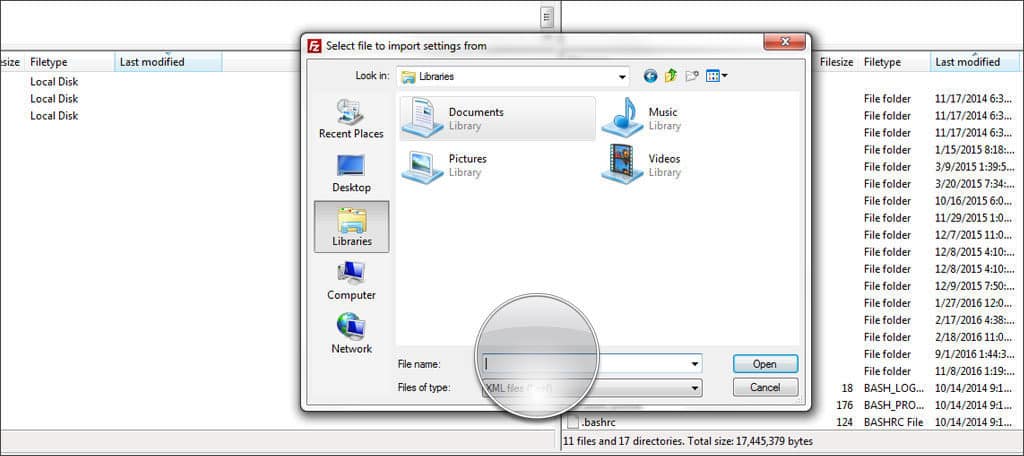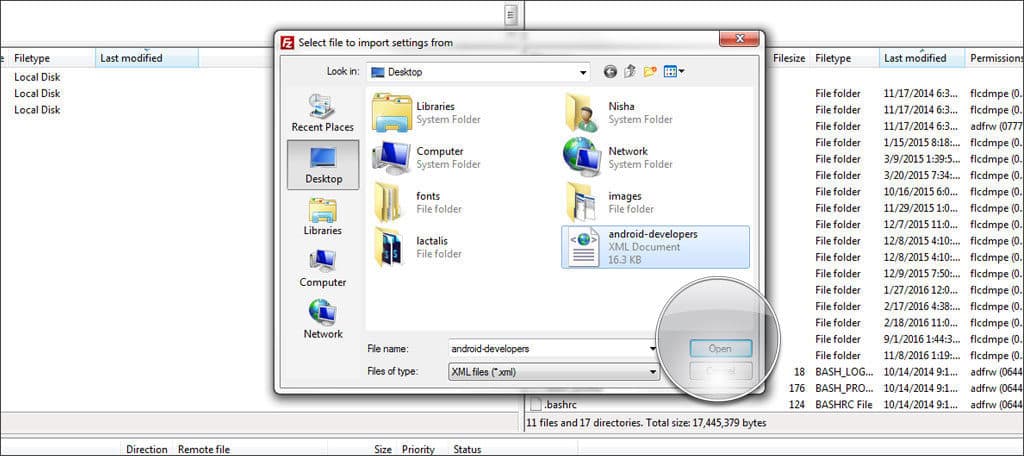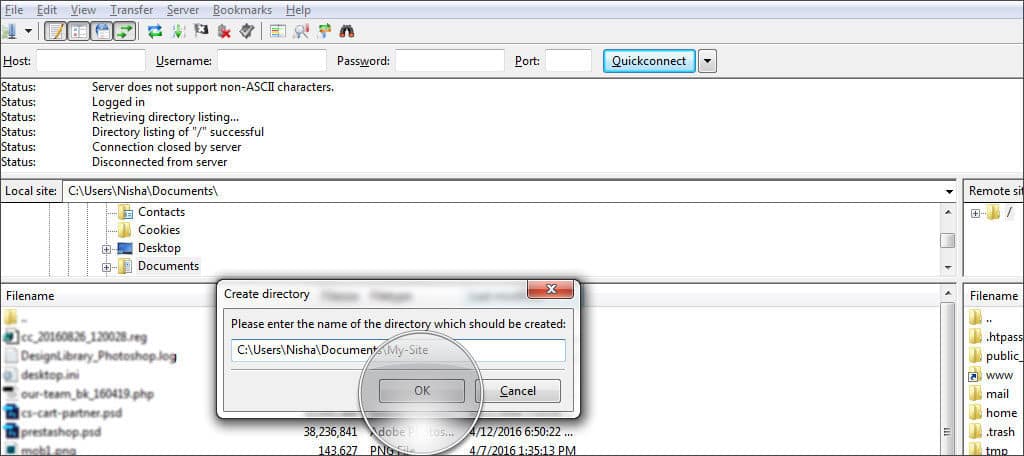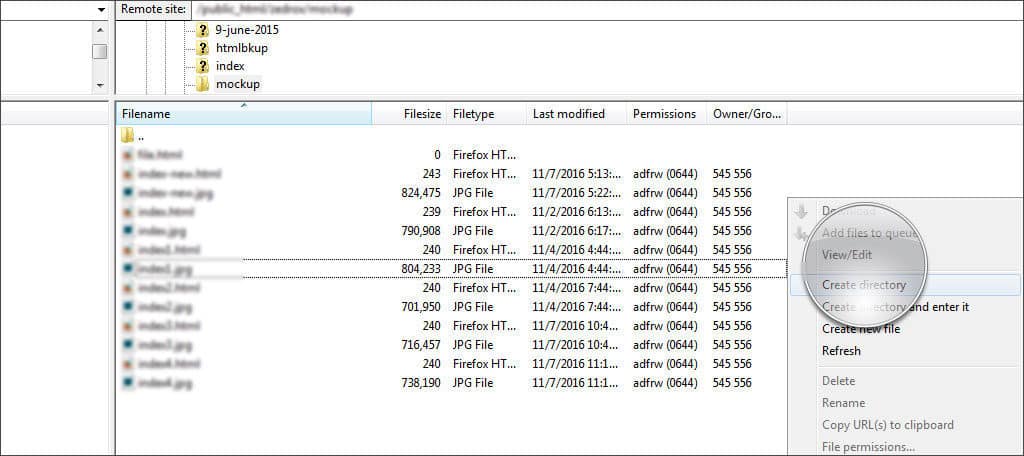
File Transfer Protocol can be a very useful tool when you need to make direct changes to your website. From uploading images to downloading all of your files for backups, FTP software can make it happen. FileZilla is one of those free programs that gives you control over the files which make up your website.
In this guide, I will show you how to use FileZilla and what it can do for you. Thanks to cPanel, making these connections is much easier.
Why Use FTP Programs to Make Modifications?
The use of FTP software can give you access to files on your website directly. This means you can remove, change, delete or upload modifications to your site from your computer.
Many developers use these kinds of tools in order to work on webpages offline. Once the files are created, you can easily upload them to your FTP hosting account.
In addition, these programs also help you create a mirror of the site on your computer system. This can be very beneficial when you need to recover from file corruption thanks to malware attacks. Essentially, you can create a backup copy by downloading all of the files from your website.
How to Use the Client for FileZilla
The first step to using the software is downloading and installing it onto your computer. To do this:
Go to Filezilla-Project.org.

Click on the button to download the client.

On this next page, you will select which operating system you use on your computer. Note: Filezilla is compatible with Windows 64-bit, 32-bit, Mac OSX and Linux.

Once you have downloaded the software, follow the instructions to install.
Connecting to Your Server with Quickconnect
Quickconnect is a feature of FileZilla that lets you quickly access your website files. You will need to know the login credentials for the FTP account. Here is how you connect to your server using this method:
Log into your cPanel host. If you do not have access to cPanel, you will need to contact your web hosting provider.

Scroll down to the “Files” section and click on “FTP Accounts.”

In this next window, scroll down until you find the FTP account you wish to use. Note: If you don’t have one specifically for the website you wish to access, you may have to create an account.

Click the link to “Configure FTP Client.”

Take note of the username, server and port under manual settings. You can also download the FTP configuration file specifically for FileZilla if you’re using Windows.

Input this information into FileZilla. Take note that “Server” from cPanel and “Host” from FileZilla are one in the same.

Once you have the fields in FileZilla filled out, click the “Quickconnect” button. You now have access to all files within your website. In FileZilla, the local site on the left is your computer while the remote site on the right pertains to your actual website.

Connecting to Your Server with FTP Configuration File
If you download the FTP configuration file from cPanel, you can set up FileZilla automatically. By default, using this method will ask you for the password before you can actually connect. However, we’ll show you how to change that in a moment. To use the config file:
Go to “File” in FileZilla and select “Import.

When the import window opens, find the FTP file you downloaded. It will be an XML file.

Select the file and click the “Open” button on this window. FileZilla will add all of the pertinent information except for the password.

Go to “File” in FileZilla, but this time select “Site Manager.” It should be the first option in the drop-down menu.

Here, you will see an entry in “My Sites” for your website. On the right side, find the “Logon Type” control. It should be set to “Ask for password” as default. Click this drop-down window and select “Normal.”

Now, you can enter in the password for the FTP account. Once you are done, click “OK” to save your changes. Now, you can connect to your web host without typing the password in every time.

How to Manage Your Files
Now that you’re able to connect to the web host server, it’s time to manage your files. You want to be careful as to what you change in the remote site area as you could inadvertently corrupt your website. This could result in your webpages no longer working correctly.
Creating a Local Site
One of the best practices when using FileZilla is to have a local site prepared on your computer. Essentially, this is a folder on your computer that will hold your website data. It’s better if you use a single folder for this purpose in order to keep files separated and easy to find. To do this:
Use the navigation in “Local site” to find the area in which you want to save your website files. For this tutorial, we’re going to use the “My Documents” area.

Right-click “My Documents” from the local site window in FileZilla.

Find the option to “Create a directory and enter it” and click.

This will bring up a small window to name the new directory. For this example, we’re going to name it “MySite.” The directory should now read something like, “C:\Users\YourName\Documents\MySite.” Bear in mind this may be different if you’re using a Mac or Linux.

Click the “OK” button to save it.

Connect to your website using the Site Manager or the Quickconnect controls.

Once the connection is made, we’re going to copy the “.htaccess” file from the website to the computer. Hold down left-click on .htaccess in the remote site window on the right and drag it to the local site window on the left. Once you drop it, you’ll see FileZilla will automatically download the file and place it in your new folder.

This file transfer works either way. You can drag-and-drop files from local to remote windows and FileZilla will automatically upload them to the site and vice-versa. This makes backing up your site easy if you want a copy of it saved to your computer system.
Can you use this with Dropbox?
For those who use the Dropbox Cloud system, you can easily back up your web files. Instead of creating the folder in your local site under “My Documents,” simply create a folder for your site in Dropbox. This is usually found by going to “C:\Users\YourName\dropbox.”
This will automatically give you a Cloud-based backup of your website when you drag files into this new folder.
Editing Your Files
FileZilla doesn’t merely give you the ability to copy and move files around on your website. You can also make direct edits to files from within the system. If you’re good with programming or need to make some small modifications on a coding level, this can be a time saver. To access editing features:
Connect to your website using FileZilla.
In the remote site window, locate the file you wish to edit. For this example, we’re going to right-click “.htaccess.”

This will bring up a window with several options. To edit a file, click the “View/Edit” option that is available.

By default, you may see a window that states, “No program associated with filetype.” The first option available by default is to use notepad as the editor. Keep in mind that this option is available for Windows computers and may be different for Mac and Linux. Click the “OK” button.
Notepad, or your default HTML editor, will load up and show you the contents of the file. In this case, it’s the .htaccess content.

Once you’re done making changes, save the file to the special folder you created above specifically for the website. Note: Any changes you make and save will not affect the website until you drag the new file over from local to remote site in FileZilla.

It’s always a good idea to save the original copies of your files in an archive folder in the event of something going wrong. This will save you from a lot of time trying to fix programming errors and other issues by giving you a copy to recover from.
Changing File Permissions
A file permission is what hosting servers use to identify how files behave on the Internet. You can make them readable, writable and/or executable. These permissions are set for owners, groups or public access. For instance, most public-accessible files will be set to “Read” only.
If you need to change these permissions, you can simply right-click the file or folder in question and select “File Permissions” located at the bottom of the list. This will open a smaller window in which you can set these permissions manually.
Note: You want to be careful when you set permissions. If these are set incorrectly, you could inadvertently give public access to your website which could lead to compromising your webpages or be one of the reasons why your website becomes hacked.
Creating New Files and Folders Online
One of the many features of this software is the ability to create new files and folders directly onto your website. This can be quite useful when you need to upload a new page or want to create a folder for holding documents and other files. To create these additions:
Connect to your website.
Right-click a file or folder in the remote site window.

Find the option to “Create new file” and click it. This will open a small window in which to enter a name.

Give the new file a name and include the extension. For example, to create a file to be viewed by a web browser, you would call it, “file.html.” Note the “HTML” part after the file name. Of course, this will be different depending on the file you wish to make.

FileZilla will create the file in the location in question.

What if you want to create a new folder and go into it to add a new file?
In that case you would:
Right-click a file in remote view and select “Create directory and enter it.”

This will open a small window in which you can give your new folder a name. Once you click “OK,” you will be taken into the new directory where you can add files.

Note: Keep in mind that web URLs do not use empty spaces as characters. So something like “My Pet Pictures” would have to be “MyPetPictures.” You can also use hyphens or underscores to separate words if you must.
Manual Transfers
In some situations, manual transfers may be more ideal for single files. FileZilla gives you the ability to either upload or download those you specify. This could be useful if you’re unable to keep a consistent FTP connection.
The manual transfer can be set up to use the current server you have selected or you can choose one from the site manager. You can also select to access a custom server for a temporary file transfer if you wish.
At the bottom of this window, you’ll see an option to start the transfer immediately. If this is checked, the transfer will begin as soon as you click the “OK” button on the bottom.
Disconnecting from FTP

To disconnect from your FTP sessions, click on “Server” from FileZilla’s toolbar and click “Disconnect.”
If you are idle for an extended period of time, the software may disconnect from the server as well.
Closing FileZilla will also end the session immediately. However, you want to make sure there are no file transfers in progress.
Understanding the Site Manager
The software allows you to store an unlimited number of sites. This is useful if you manage or own a large number of domains. This area gives you the means to customize each one regarding its own settings. Let’s take a closer look at what you can do in the Site Manager.

Host
This is the host of the FTP account. It’s usually something like “ftp.your_domain_name.com.”
Port
This is the port at which your FTP connects. By default, most accounts will use port 21. However, this may change depending on security or firewall requirements.
Protocol

By default, Filezilla will use FTP as the default protocol. However, you do have the option to switch to SFTP, a secured method of transferring files over a secure channel.
Encryption

The type of encryption you’ll use will depend on the security of your host server. Most systems will use FTP over TLS if available. If your system has other forms of security measures in place, you may need to change this method depending on those settings. For now, keep the default setting in place unless your administrator instructs otherwise.
Logon Type

There are several types of logons for FileZilla. If you set this to “Normal,” you’re able to input the password and username to be saved in the system. Setting it to “Ask for password” requires you to enter the password every time you log into your FTP account. This could be ideal if you use a public computer. The “Anonymous” account gives you access to limited FTP on the server, but you may not be able to access vital areas. Interactive works like asking for a password, but it will ask for every connection you make.
Background Color

If you want to give a different look to each website you’re working in, you can give them an individual background color.
The Advanced Tab

Under the advanced tab, you have access to select the specific server type. This is usually set to auto-detect, but you may find it useful to choose your own. Unless you are certain of the server type you’re using, it may be a good idea to keep this at its default setting.
The default local directory can be used to automatically connect you to the folder stored on your computer system. Instead of searching for a place to keep your files, you can have Filezilla default to this location every time you connect.
The default remote directory works in much the same way as the local folder. The difference is that it will automatically go to the default remote location when you connect.
Synchronized browsing works well if you have an identical directory structure on both the local computer and the web server. This means that any move you make in one screen, it will be duplicated in the other.
Enabling directory comparison allows you to see the differences between local and remote files. This can help troubleshoot file sizes, modifications or identifying obscure files.
When you learn how to use FileZilla, you open the doors to gaining more control over your website. From your desktop computer or laptop, you can make direct changes to the site or back up all of your files with this software. When you need a stable system that gives you access to your online files, consider what FileZilla can do for you.

I do not see anything specific about moving files BETWEEN remote folders, rather downloading and uploading
I there a way to auto connect to a frequently used site when invoking filezilla?
Filezilla has a function called “Quick Connect” that may be useful to you. Check that out.